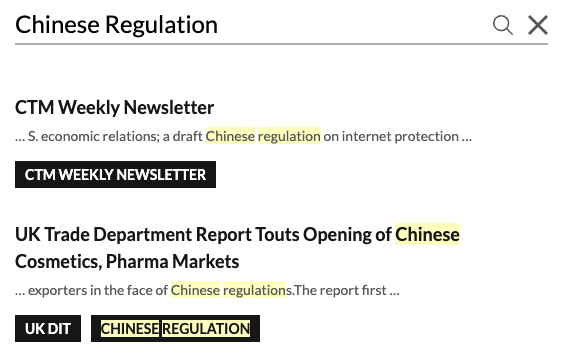The Commerce Department’s Bureau of Industry and Security (BIS) announced on Friday that it has initiated an investigation under Section 232 of the Trade Expansion Act of 1962 "to determine the effects on U.S. national security from imports of Neodymium-iron-boron (NdFeB) permanent magnets." The press release does not mention China, but trade data show that China is by far the leading import source. One possible outcome of this investigation is that the Biden administration will impose tariffs on imports of these products from China and/or other countries.
This investigation should not come as a big surprise, as the Biden administration hinted at it in its recent report on supply chains and manufacturing. The report states that:
Neodymium (NdFeB) permanent magnets play a key role in motors and other devices, and are important to both defense and civilian industrial uses. Yet the U.S. is heavily dependent on imports for this critical product. We recommend that the Department of Commerce evaluate whether to initiate an investigation into neodymium permanent magnets under Section 232 of the Trade Expansion Act of 1962.
The Commerce Department's press release for the new Section 232 investigation states that "[c]ritical national security systems rely on NdFeB permanent magnets, including fighter aircraft and missile guidance systems." These products "are essential components of critical infrastructure, including electric vehicles and wind turbines" and "are also used in computer hard drives, audio equipment, and MRI devices."
More details on these products can be found in this Quartz article, which notes that "[a] typical NdFeB magnet contains about one-third neodymium, a light rare earth."
Neodymium-iron-boron magnets fall under HTS tariff code 8505.11.0070. Data from the U.S. International Trade Commission for 2016-2020 show that China was by far the leading source of imports in this category:
Top 10 US Import Sources of Neodymium-iron-boron Magnets
(2016-2020)

Beyond imports, China dominates global production of these products. One report states that "China is by far the world’s top producer of [rare earth] magnets, responsible for 87% of global production in 2018."
According to the Commerce Department press release, interested parties are invited to submit written comments, data, analyses, or other information to BIS by November 12, 2021. The Secretary of Commerce has 270 days from initiation, until June 18, 2022, to present findings and recommendations to the President.
BIS has a great deal of discretion under the statute in carrying out its investigation, which will focus on whether these magnets "are being imported into the United States in such quantities or under such circumstances as to threaten to impair the national security." The President also has discretion in deciding what actions to take in response to an affirmative finding. Tariffs are the most well-known Section 232 remedy, but it's not clear how well they would work here to achieve the Biden administration's goals in relation to national security. It may be difficult to shift production of these products to the United States, although the Biden administration could have this in mind; it is also possible the administration would look for ways to shift it to countries that are considered reliable allies.
October 2, 2021 UPDATE:
In the Commerce Department's Federal Register notice soliciting public comments, it sets out the following questions for interested parties:
The Department is particularly interested in comments and information directed to the criteria listed in § 705.4 of the NSIBR as they affect national security, including the following:
(i) Quantity of or other circumstances related to the importation of NdFeB permanent magnets;
(ii) Domestic production and productive capacity needed for NdFeB permanent magnets to meet projected national defense requirements;
(iii) Existing and anticipated availability of human resources, products, raw materials, production equipment, and facilities to produce NdFeB permanent magnets;
(iv) Growth requirements of the NdFeB permanent magnets industry to meet national defense requirements and/or requirements for supplies and services necessary to assure such growth including investment, exploration, and development;
(v) The impact of foreign competition on the economic welfare of the domestic NdFeB permanent magnets industry;
(vi) The displacement of any domestic NdFeB permanent magnets production causing substantial unemployment, decrease in the revenues of government, loss of investment or specialized skills and productive capacity, or other serious effects;
(vii) Relevant factors that are causing or will cause a weakening of our national economy; and
(viii) Any other relevant factors, including the use and importance of NdFeB permanent magnets in critical infrastructure sectors identified in Presidential Policy Directive 21 (Feb. 12, 2013) (for a listing of those 16 sectors see https://www.dhs.gov/cisa/ critical-infrastructure-sectors).

